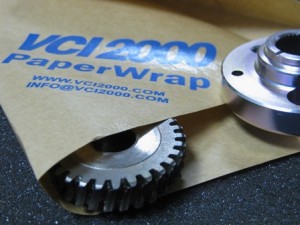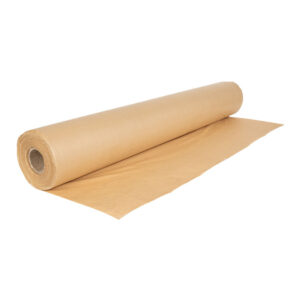In industries where metals are ubiquitous, corrosion poses a constant threat to the integrity and longevity of valuable equipment and components. Vapor Corrosion Inhibitor (VCI) anticorrosion paper has emerged as a reliable solution to combat this pervasive issue. In this comprehensive guide, we will embark on a chemical journey to unravel the workings of VCI anticorrosion paper, exploring its composition, mechanisms, and applications.
I. The Foundation: Understanding VCI Anticorrosion Paper
-
Introduction to VCI Technology: Preserving Metals in a Vaporized Shield
Vapor Corrosion Inhibitors, or VCIs, are a class of compounds designed to protect metals from corrosion. VCI anticorrosion paper utilizes these inhibitors to form an invisible shield around metal surfaces, preventing the onset of corrosion.
-
Key Objective:
- The primary goal of VCI technology is to create a protective atmosphere around metals, shielding them from the corrosive effects of moisture, oxygen, and other environmental factors.
-
Versatility:
- VCI anticorrosion paper caters to a diverse range of industries, from manufacturing to shipping, offering a versatile and effective solution.
-
II. The Chemical Composition of VCI Anticorrosion Paper
-
Active Ingredients: Understanding VCI Compounds
The effectiveness of VCI anticorrosion paper lies in its active ingredients – the VCI compounds that play a pivotal role in creating a protective shield around metals.
-
Common VCIs:
- Nitrites, Amines, and their derivatives are common VCI compounds.
- These compounds volatilize into the air and form a protective layer on metal surfaces.
-
The Volatilization Process:
- The VCI compounds volatilize, transforming from a solid or liquid state to a vapor, creating a protective vapor phase around metal objects.
-
III. Mechanisms of Protection: How VCIs Inhibit Corrosion
A. Passivation: Forming a Protective Layer
-
Formation of a Molecular Barrier:
VCIs operate on the principle of passivation, forming a molecular barrier on the metal surface that hinders the corrosive agents from reaching the metal.
-
Chemical Reaction:
- The VCI compounds react with the metal surface, forming a protective layer that acts as a barrier against moisture and oxygen.
-
Electrochemical Process:
- The VCI layer alters the electrochemical properties of the metal, making it less susceptible to corrosion.
-
B. Anodic and Cathodic Inhibition: Balancing the Corrosion Equation
-
Anodic Inhibition: Preventing Oxidation
VCIs function as anodic inhibitors by hindering the oxidation of metal surfaces.
-
Oxidation Reaction:
- VCIs react with metal surfaces, preventing the formation of metal oxides and suppressing the anodic reaction of corrosion.
-
-
Cathodic Inhibition: Inhibiting Reduction Reactions
VCIs also play a role in cathodic inhibition by impeding reduction reactions that contribute to corrosion.
-
Cathodic Reaction:
- The VCI layer inhibits the reduction of oxygen and water, essential components of the cathodic reaction in corrosion.
-
IV. The Role of Paper in VCI Anticorrosion: A Synergistic Bond
-
Paper as a Carrier and Dispenser:
The marriage of VCI compounds with paper creates a delivery system that effectively dispenses the corrosion inhibitors onto metal surfaces.
-
Absorption and Dispersion:
- VCI compounds are embedded or coated onto the paper, allowing controlled release and dispersion when needed.
-
Protection in Storage and Transit:
- VCI anticorrosion paper provides continuous protection during storage and transportation, preventing corrosion before and after the metal reaches its destination.
-
V. Applications of VCI Anticorrosion Paper: A Multifaceted Guardian
-
Metal Storage and Packaging: Safeguarding Metals in Transit
VCI anticorrosion paper finds extensive use in metal storage and packaging, ensuring that metals remain corrosion-free during transportation and storage.
-
Variety of Forms:
- Available as sheets, rolls, or bags, VCI anticorrosion paper adapts to various packaging needs, providing flexibility in application.
-
Metal Types:
- Suitable for ferrous and non-ferrous metals, making it an ideal choice for industries working with a diverse range of metals.
-
-
Interleaving and Wrapping: Protecting Every Crevice
The versatility of VCI anticorrosion paper shines through in its ability to be used as interleaving sheets or as wrapping material, providing a protective layer between metal surfaces.
- Crevice Protection:
- Effective in safeguarding metal parts with intricate shapes and ensuring that every nook and cranny is shielded from corrosion.
- Crevice Protection:
-
Long-Term Storage Solutions: Extended Protection Durability
VCI anticorrosion paper is a preferred choice for long-term storage solutions, offering extended protection for metals stored for prolonged durations.
-
Inactive State:
- VCIs remain inactive until activated by moisture, ensuring that the protective effects are sustained until the metal is put into use.
-
VI. Environmental Impact: Eco-Friendly Corrosion Protection
-
Biodegradability and Recyclability: A Green Solution
VCI anticorrosion paper aligns with the growing emphasis on environmentally friendly solutions, as it is biodegradable and recyclable.
-
Reduced Environmental Footprint:
- The eco-friendly nature of VCI anticorrosion paper contributes to sustainable practices in industries.
-
Compliance with Regulations:
- VCI anticorrosion paper adheres to environmental regulations, making it a responsible choice for companies aiming for eco-conscious solutions.
-
VII. Considerations for Effective Use: Best Practices for VCI Anticorrosion Paper
-
Proper Packaging Techniques: Maximizing Effectiveness
To derive optimal benefits from VCI anticorrosion paper, certain best practices and packaging techniques should be adhered to.
-
Proximity to Metals:
- Ensure that the VCI paper is placed in close proximity to the metal objects to allow for effective vaporization and formation of the protective layer.
-
Avoid Moisture Traps:
- Prevent the formation of moisture traps within packaging, as excess moisture can dilute the effectiveness of VCIs.
-
VIII. Conclusion: Preserving the Integrity of Metals with VCI Anticorrosion Paper
In conclusion, VCI anticorrosion paper stands as a stalwart guardian, protecting metals from the insidious threat of corrosion through a sophisticated chemical dance. Its active ingredients, mechanisms of protection, and versatile applications make it a crucial component in various industries where metal preservation is paramount.
As industries evolve towards sustainable and eco-friendly practices, VCI anticorrosion paper emerges as a responsible choice that not only safeguards valuable metals but does so in an environmentally conscious manner. The chemical breakdown of VCI anticorrosion paper reveals a potent solution that goes beyond conventional packaging materials, offering a shield against the corrosive forces that seek to compromise the integrity of metals in our ever-changing industrial landscape.






